Outdoor Signs Adelaide

Navigating Environmental Assessment Requirements for New Signs
The installation of new signage can pose various environmental challenges that need to be meticulously assessed. These impacts may include disruption to local wildlife habitats, increased light pollution, and alterations to visual landscapes. Signs e...
Read more →
Green Alternatives to Traditional Signage Lighting
The integration of smart technology into signage lighting is revolutionising how businesses communicate visually. Digital signage now utilizes sensors and adaptive lighting systems that adjust brightness based on environmental conditions. These advan...
Read more →
Recycling and Upcycling in the Sign Writing Industry
The sign writing industry has embraced creative solutions for utilising discarded materials. One inventive approach involves transforming old timber pallets into bespoke signage for local businesses. These pallets can be sanded down and personalised ...
Read more →
Effects of Weather Conditions on Signage Sustainability
The accumulation of snow and ice can significantly impact the integrity and visibility of signage. During winter months, these weather conditions may lead to obscured messages, creating a challenge for drivers and pedestrians. Icy buildup can weaken ...
Read more →
Assessing the Environmental Footprint of Signage Production
Signage production often leads to substantial waste, particularly as signs reach their end of life. Disposal methods significantly impact environmental outcomes. Many signs are made from materials that cannot decompose naturally, resulting in long-te...
Read more →
Complying with Environmental Noise Regulations for Sign Displays
Failure to adhere to environmental noise regulations can result in a range of serious legal consequences for businesses. Authorities may impose substantial fines that reflect the severity of the infringement. In some cases, penalties can escalate sig...
Read more →
Sustainable Materials for Signage in Urban Adelaide
Signage in urban environments must be both functional and visually appealing. The design should consider the surrounding architecture, ensuring that materials and colours harmonise with the urban landscape. The placement of signage plays a critical r...
Read more →
The Impact of Local Wildlife on Sign Placement Decisions
Effective sign placement relies on comprehensive analysis of locations where wildlife encounters frequently occur. Understanding the movement patterns of local fauna helps determine the most suitable areas for signage. Collecting data on animal activ...
Read more →
Best Practices for Eco-Friendly Signage in South Australia
Digital signage offers a dynamic way to convey messages while significantly reducing the environmental impact associated with traditional signage. Unlike static signs, digital displays can be updated remotely and frequently, negating the need for new...
Read more →
Understanding Environmental Regulations for Signage in Adelaide
Choosing the right materials for signage in Adelaide is essential for both aesthetics and compliance with environmental regulations. Eco-friendly materials, such as recycled plastics, bamboo, or sustainably sourced timber, not only reduce environment...
Read more →
Ensuring Safe Sight Lines and Accessibility in Street Signage
Effective street signage relies heavily on colour contrast to ensure maximum visibility and legibility. High contrast between text and background aids in distinguishing messages from a distance, which is essential for safe navigation. Dark text on a ...
Read more →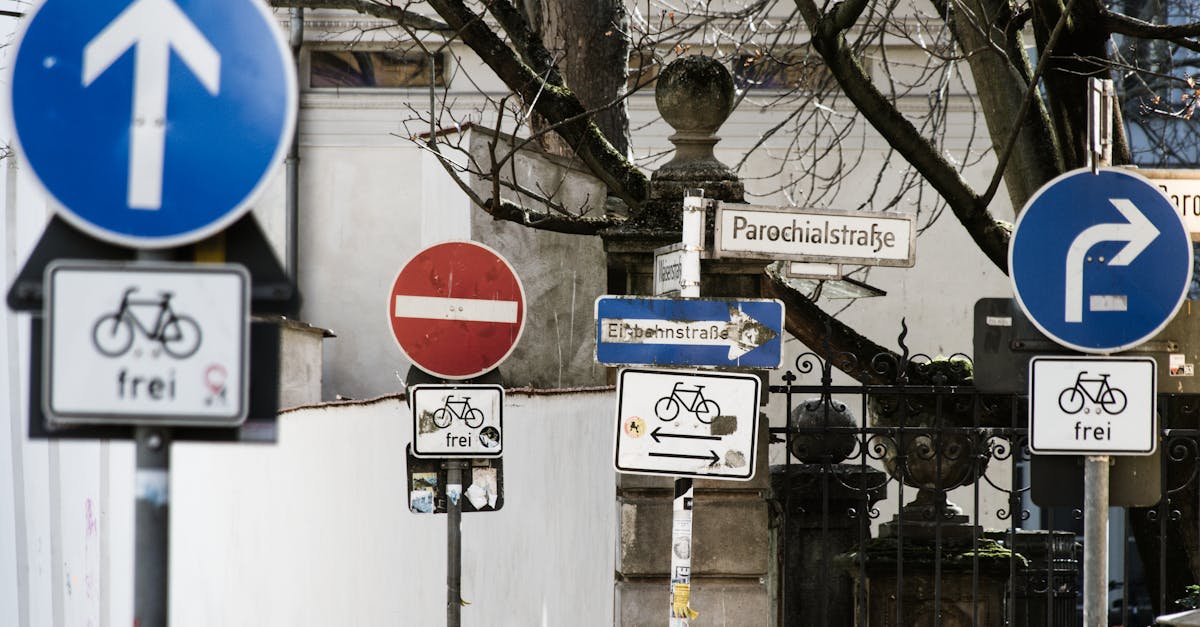
How to Create Compliant Signage for Diverse Physical Abilities
An effective signage system requires careful consideration of where signs are placed. Signs must be positioned at a height and angle that ensures visibility and accessibility for all users. For optimal sightlines, key information should be located wi...
Read more →
Essential Safety Guidelines for Outdoor Advertising in Adelaide
When planning outdoor advertising campaigns, conducting a thorough risk assessment is crucial to ensure the safety of both the public and the advertising materials. Identifying the specific location and its unique challenges helps in recognising pote...
Read more →
Understanding the Role of Accessibility Audits in Signage Development
Accessibility audits play a crucial role in refining signage design by identifying potential barriers that may hinder effective communication. By evaluating both physical and digital signage through the lens of inclusivity, these audits assist in ens...
Read more →
Best Practices for Ensuring Safety in Sign Placement and Design
Community engagement plays a crucial role in the effective placement and design of signs. Involving local residents in discussions allows for valuable insights into the specific needs and preferences of the area. Holding public forums and workshops c...
Read more →
Compliance with National Disability Discrimination Act in Signage
Local councils serve as vital intermediaries between national legislation and local implementation, ensuring compliance with the National Disability Discrimination Act. They are tasked with developing and enforcing policies related to public signage,...
Read more →
Navigating Accessibility Features in Sign Design for Adelaide Businesses
Incorporating symbols and icons into sign design enhances communication, especially for diverse audiences. These visual elements can convey essential information quickly, transcending language barriers and ensuring clarity for all individuals, includ...
Read more →
The Importance of Safety Regulations for Local Sign Writers in Adelaide
The proper upkeep of tools and equipment is essential for sign writers to ensure both safety and efficiency. Regular inspections help identify wear and tear, which can lead to malfunctions if left unchecked. Ensuring that all tools are in good workin...
Read more →
Accessibility Requirements for Signage in Compliance with Australian Standards
In the realm of signage design, incorporating Braille and tactile elements is essential for creating an inclusive environment. These features provide vital information to individuals who are blind or have low vision. Signage should be positioned at a...
Read more →
Understanding Safety Compliance for Public Signage in Adelaide
Choosing the right materials for public signage is essential for ensuring longevity and compliance with safety regulations. Commonly used materials include aluminium, PVC, and high-density polyethylene, each offering distinct advantages in terms of c...
Read more →
Navigating Changes in Illumination Regulations for Sign Writers
When designing illuminated signage, ensuring compliance with local regulations should be the foremost concern. Familiarity with guidelines regarding brightness levels, colour temperatures, and fixture types can help prevent potential legal disputes. ...
Read more →
Assessing Energy Efficiency in Illuminated Signage Solutions
Regular maintenance plays a crucial role in ensuring the longevity and performance of illuminated signage. Frequent inspections help to identify any potential issues such as burnt-out bulbs, fading colours, or electrical faults. Addressing these conc...
Read more →
Balancing Aesthetics and Regulations in Illuminated Signage
The positioning of a business plays a crucial role in determining the design and functionality of its signage. Urban environments often have different requirements compared to suburban areas. High foot traffic in city centres tends to favour larger, ...
Read more →
Impact of Illumination on Sign Visibility at Night
Illuminated signage comes in several forms, each offering unique benefits and considerations. LED signs have gained popularity due to their energy efficiency and versatility. Their brightness can be easily adjusted, making them suitable for various s...
Read more →
Creating Safe Illuminated Signage: Best Practices
Incorporating energy-efficient technologies in illuminated signage can significantly reduce operational costs and environmental impact. LED lighting has emerged as a prominent choice due to its low energy consumption and long lifespan compared to tra...
Read more →
Local Council Guidelines for Reflective Materials in Signage
Regular inspections of reflective signage are crucial for ensuring clarity and safety for road users. Weather conditions, dirt accumulation, and fading can significantly reduce the effectiveness of these signs. It is advisable to implement a schedule...
Read more →
Evaluating the Effectiveness of LED Signage Illumination
LED signage offers significant energy savings compared to traditional lighting options. These energy-efficient systems consume considerably less power while providing greater luminosity. The longevity of LED technology further enhances its cost-effec...
Read more →
Compliance with Reflective Signage Regulations in Urban Areas
Urban planners are often hindered by the complex interplay of regulations and local conditions. The diverse landscape and varying population densities in urban areas can complicate the installation and maintenance of reflective signage. Additionally,...
Read more →
The Importance of Brightness Levels in Signage Illumination
Local councils and regulatory bodies often establish specific guidelines for signage illumination to ensure safety and aesthetics in urban environments. These regulations can dictate the maximum brightness levels during different times of the day, ai...
Read more →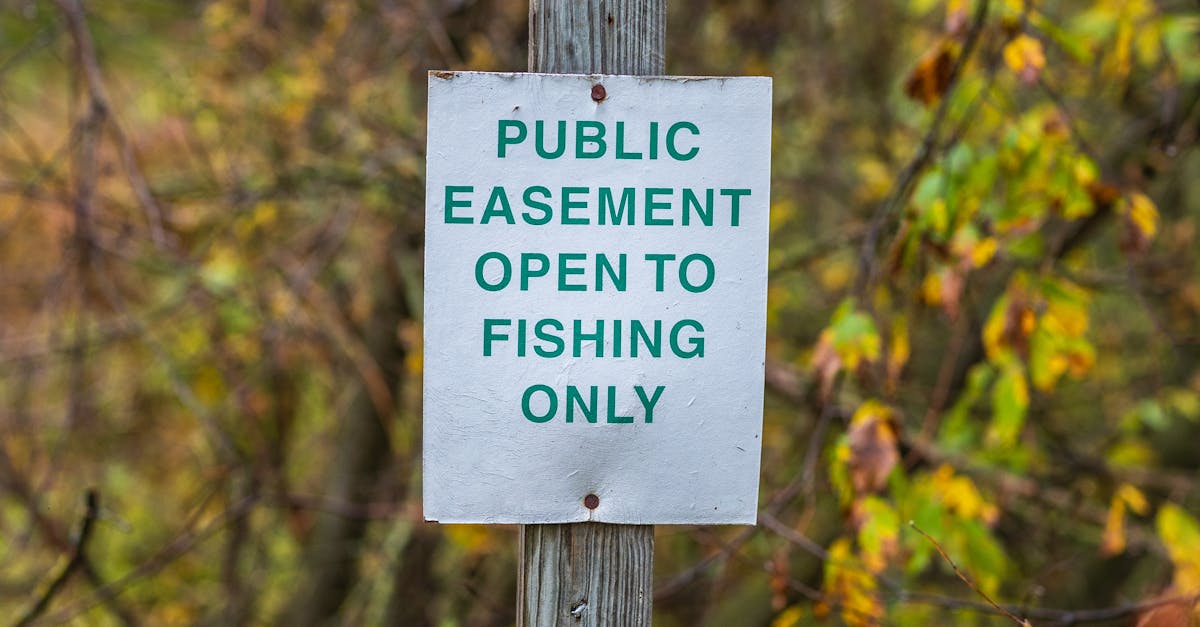
Understanding the Basics of Illumination Standards for Signage in Adelaide
Lighting consumes a significant amount of energy, particularly in commercial settings such as signage. The emphasis on energy efficiency becomes crucial for businesses aiming to reduce operational costs and environmental impact. Energy-efficient ligh...
Read more →
Community Standards for Size Restrictions on Public Notices
Failing to adhere to established size restrictions for public notices can lead to significant legal ramifications for local authorities. Non-compliance may result in penalties stipulated under applicable legislation, including fines or other sanction...
Read more →
Essential Rules for Vehicle Signage Dimensions in Adelaide
Reflective signage is designed to enhance visibility, especially in low-light conditions. This type of signage incorporates materials that reflect light, making it highly effective during nighttime or in poor weather. Businesses often opt for reflect...
Read more →
Evaluating Sign Placement Requirements for Window Signage
Durability is a key aspect when it comes to selecting materials for window signage. Exposure to diverse weather conditions can significantly impact the lifespan of a sign. Choosing materials that can withstand harsh sunlight, heavy rain, and temperat...
Read more →
Permitted Sizes for Illuminated Signage in Adelaide Regions
Illuminated signage plays a significant role in shaping the visual character of neighbourhoods. It not only communicates essential information but also influences the overall ambience of the area. Excessively bright or poorly designed signs can detra...
Read more →
Navigating Sign Height Limitations for Commercial Properties
Applying for height variances requires a methodical approach to ensure compliance with local regulations. First, it is essential to gather relevant information regarding the specific zoning laws that govern signage within the area. An understanding o...
Read more →
Best Practices for Positioning Outdoor Banners in Residential Zones
When it comes to installing outdoor banners in residential zones, choosing the right mounting technique is essential for safety and effectiveness. Utilising strong materials such as weather-resistant ropes or heavy-duty zip ties can provide extra sup...
Read more →
Compliance with Local Council Restrictions on Billboard Sizes
Understanding local regulations is crucial for any business relying on outdoor advertising. Each council has its own specific rules regarding billboard sizes, locations, and permitted content. Regularly reviewing these policies not only helps in main...
Read more →
Regulations Governing A-Frame Sign Sizes in Urban Areas
A-frame signs play a crucial role in urban advertising, yet their placement must adhere to specific regulations to ensure both visibility and safety. Local councils typically have guidelines regarding how close these signs can be placed to pedestrian...
Read more →
Guidelines for Sign Placement Near Roadways in South Australia
Signage placed near roadways must adhere to specific height and size regulations to ensure they are visible and legible to drivers. Generally, the minimum height for signs should be elevated to at least 2.1 metres above the ground. This clearance hel...
Read more →
Understanding Maximum Dimensions for Signage in Adelaide
The illumination of signage plays a crucial role in ensuring visibility and effectiveness, especially in low-light conditions. Regulations typically specify the intensity and distribution of light so that signs are easily readable without causing dis...
Read more →
Differences Between Urban and Rural Signage Regulations in Adelaide
In urban areas, signage regulations typically focus on minimising visual clutter and prioritising pedestrian safety. Signs should adhere to specified size limits based on their location. For instance, business districts may allow larger signage to ca...
Read more →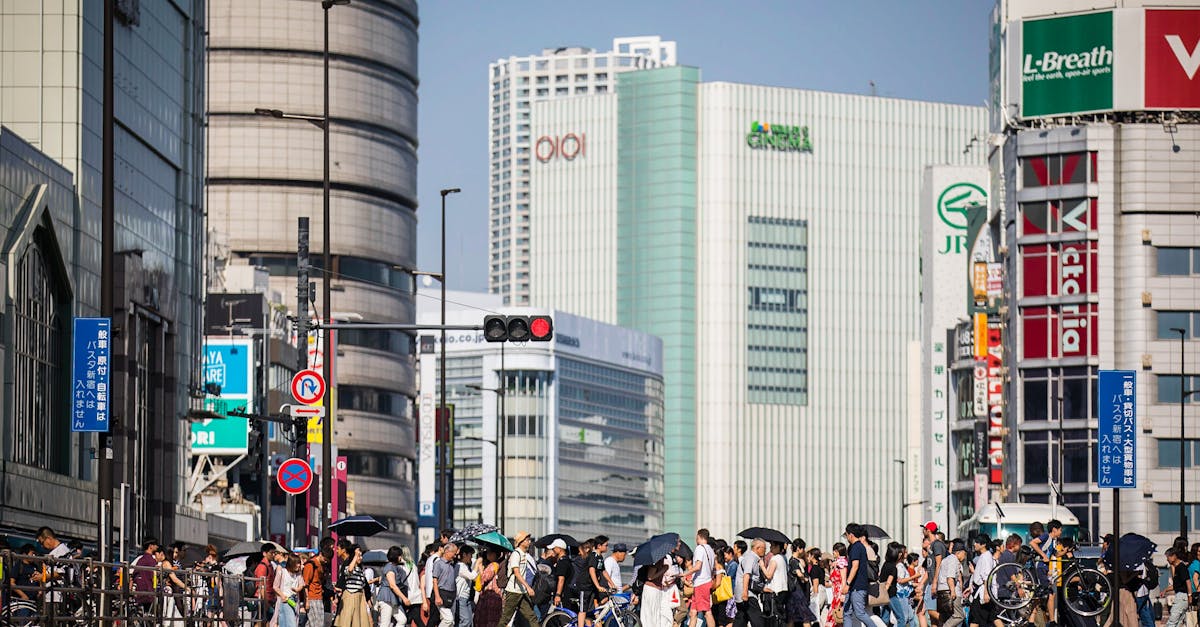
Tips for Efficiently Managing Council Sign Approval Applications
Understanding the costs associated with sign approval applications is crucial for effective budgeting. Various factors contribute to the overall expenses. Application fees can vary significantly based on location and the type of signage requested. Be...
Read more →
The Role of Local Councils in Regulating Business Signage
Local councils play a crucial role in fostering dialogue between business owners and the community regarding signage. Effective community consultation ensures that the views and concerns of local residents are considered before any regulations or gui...
Read more →
Timelines for Getting Council Approval for Signage Projects
Navigating the intricacies of council approval for signage projects can be complex. Various factors often contribute to delays in the decision-making process. Local regulations and zoning laws are crucial, as they dictate what types of signage are pe...
Read more →
How to Prepare Your Signage Application with the Council
Effective communication with your local council can significantly streamline the signage application process. Initially, it's important to familiarize yourself with the council's specific requirements. This can include reading relevant guidelines or ...
Read more →
Understanding Council Permit Requirements for Signage in Adelaide
When submitting an application for signage, applicants must ensure their proposal aligns with various council regulations. These include considerations such as the signage dimensions, materials, colours, and overall design. Compliance with safety sta...
Read more →
Common Pitfalls in Council Approval Processes for Sign Writers
Effective planning and design are fundamental elements in the council approval process for sign writers. Without thorough initial assessments, projects may lack the necessary details for compliance with local regulations. This can lead to delays or o...
Read more →
Navigating Local Government Rules for Signage Advertising
Local governments often differentiate between temporary and permanent signage when outlining regulations. Temporary signs are typically allowed for a limited period, often related to specific events or promotions. These regulations may include size r...
Read more →
The Impact of Council Regulations on Business Signage in Adelaide
Business owners in Adelaide must navigate a structured permitting process to ensure their signage complies with local regulations. The journey typically begins with submitting an application to the relevant council department, which outlines the prop...
Read more →
Key Considerations for Securing Signage Approvals from Local Councils
When preparing to submit an application for signage approval, ensure that it adheres to local council guidelines. Each council may have specific requirements regarding the type of signage, dimensions, and materials. Reviewing the relevant planning sc...
Read more →
Surface Preparation: Tips for Adhesion and Longevity
Proper drying and curing are critical steps in enhancing the adhesion of coatings and adhesives. A surface that remains damp or improperly cured can lead to weak bonds and increases the risk of failures. It is essential to allow sufficient time for a...
Read more →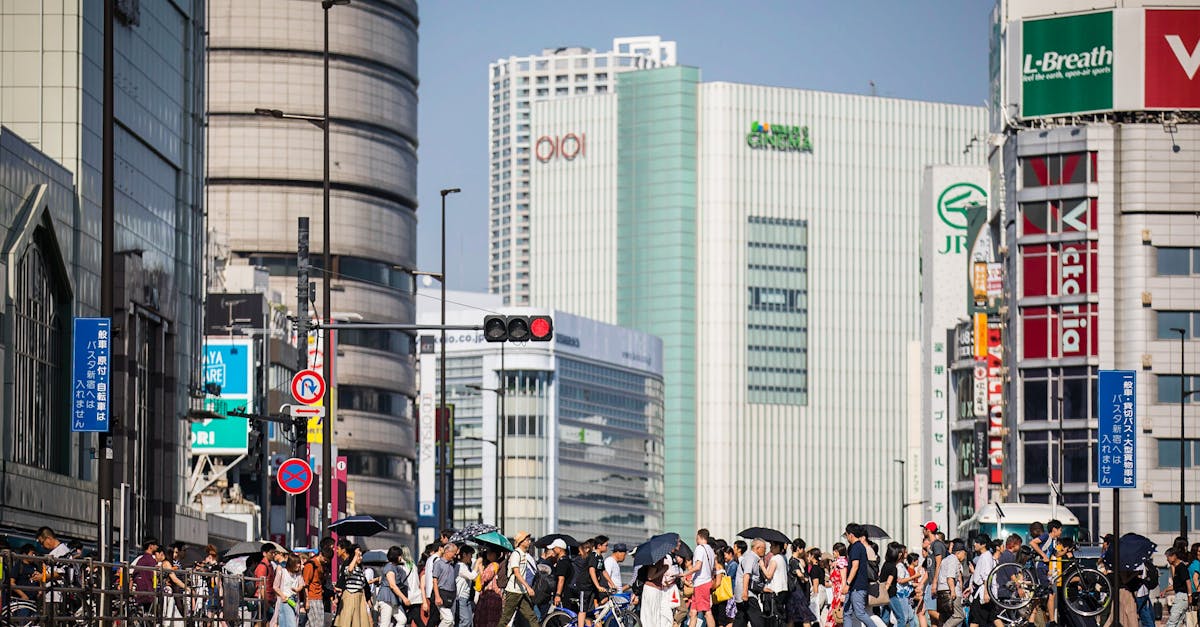
Environmental Considerations in Sign Surface Preparation
Ensuring the authenticity and quality of materials used in sign surface preparation is vital for both environmental sustainability and project longevity. Sourcing from reputable suppliers who can provide certifications is essential. These documents c...
Read more →
Best Practices for Preparing Rough Surfaces
Ensuring safety during surface preparation is critical. A thorough assessment of the workspace helps identify potential hazards such as sharp edges, dust creation, or chemical exposure. Adequate ventilation is essential when working with materials th...
Read more →
Preparing Metal Surfaces for Sign Applications
Selecting the appropriate primer for metal signage is crucial for ensuring durability and adhesion. The type of metal and the environmental conditions the sign will face are key considerations. For example, aluminium may require a different primer th...
Read more →
The Role of Surface Preparation in Sign Durability
One frequent error involves inadequate cleaning of the surface before application. Dust, grease, and contaminants can prevent proper adhesion, leading to peeling or fading of the sign over time. Many overlook the importance of thorough cleaning, opti...
Read more →
Step-by-Step Guide to Surface Preparation for Signage
Proper sanding is essential for achieving a smooth surface prior to applying any finishes. Start with a coarse grit sandpaper to remove imperfections, old paint, or rough patches. This primary phase prepares the surface for the next steps in the proc...
Read more →
Techniques for Preparing Various Sign Materials
Choosing the right fabric is crucial for effective signage. Different types of fabric offer varying levels of durability, texture, and appearance. For outdoor signs, materials like polyester or nylon are often preferred due to their weather resistanc...
Read more →
Tools and Materials for Effective Surface Preparation
Surface roughness quantifies the texture of a surface, impacting adhesion, coating performance, and overall finish quality. Accurate measurement of roughness is essential for industries like manufacturing and construction. Various techniques are empl...
Read more →
Common Surface Preparation Mistakes to Avoid
Environmental conditions play a crucial role in determining the success of any surface preparation process. Factors such as temperature and humidity can significantly affect the adhesion and final appearance of coatings. High humidity can lead to moi...
Read more →
Importance of Proper Surface Preparation in Sign Writing
Clean surfaces are essential for achieving optimal adhesion of paint and materials in sign writing. Begin by selecting an appropriate cleaning solution based on the surface type. For different materials, such as wood, metal, or plastic, specific clea...
Read more →
How to Achieve a Flawless Gold Leaf Finish
The preparation of the surface is crucial for a successful gold leaf application. Begin by ensuring the surface is clean, smooth, and free of dust. Any imperfections will show through the leaf, so it is advisable to sand and prime the area as needed....
Read more →
Innovations in Gold Leaf Finishing Techniques
Gold leaf has captivated artists for centuries, offering a touch of opulence and radiance to various forms of artistic expression. Its application can be seen in traditional techniques such as gilding, where fine sheets of gold are applied to surface...
Read more →
Historical Significance of Gold Leaf in Sign Writing
Gold leaf signage holds immense historical value, representing an art form that dates back centuries. Many vintage signs, once vibrant with gilded letters, now face the threat of deterioration due to environmental factors and neglect. Preservation ef...
Read more →
Maintaining and Caring for Gold Leaf Signs
During the summer months, direct sunlight can intensify heat, potentially leading to fading or damage to gold leaf signs. Regular cleaning is essential to remove dust and debris. A soft, dry cloth is effective for this purpose, ensuring that the surf...
Read more →
Common Mistakes to Avoid with Gold Leaf Application
Gold leaf is remarkably delicate and requires careful application techniques to ensure a flawless finish. Applying excessive pressure can easily lead to creasing or tearing, compromising the visual appeal of the gilded surface. It is essential to wor...
Read more →
Preparing Surfaces for Successful Gold Leaf Application
The choice of adhesive significantly impacts the success of gold leaf application. Common options include traditional oil-based size, which offers a long open time, allowing for adjustments during application. Water-based alternatives are also popula...
Read more →
Understanding the Different Types of Gold Leaf
Gold leaf has been a revered material in architecture for centuries, celebrated for its radiant, lustrous qualities. Its application can be observed in various structures, ranging from sacred temples to grand palaces. This luxurious finish can elevat...
Read more →
Step-by-Step Guide to Applying Gold Leaf on Signage
The process begins with careful preparation of the surface to ensure optimal adhesion of the gold leaf. Any dust, grease, or imperfections should be removed to provide a clean and smooth base. Depending on the desired finish, a special adhesive known...
Read more →
The Art of Gold Leaf Application in Sign Writing
Gold leaf, with its stunning luster, requires careful maintenance to ensure its beauty endures. Regular dusting with a soft, dry cloth helps remove debris without scratching the delicate surface. Keeping the signage away from direct sunlight prevents...
Read more →
Essential Tools for Gold Leaf Techniques
Gold leaf application is typically executed using a method known as gilding. This process involves the careful placement of thin sheets of gold onto a prepared surface, usually treated with an adhesive. The adhesive, or size, must be applied evenly, ...
Read more →
Incorporating Customer Feedback into Digital Design Iterations
Effective collection of customer feedback relies on a variety of tools that cater to different preferences and contexts. Surveys and questionnaires are among the most popular options, allowing businesses to gather structured insights from a wide audi...
Read more →
Responsive Design Techniques for Mobile Signage Applications
User experience is significantly impacted by the design choices made for touchscreen interfaces. Ensuring that touch targets are large enough can help users interact with the screen effectively. Providing ample spacing between buttons enhances usabil...
Read more →
Combining Photography and Graphics in Sign Design
The integration of photography and graphics in sign design has been revolutionised by the advent of digital tools. These advancements enable designers to experiment with various styles and effects, enhancing the overall visual impact of their signage...
Read more →
Animating Signs: Bringing Digital Displays to Life
Effective digital signage animation should prioritise clarity. Each frame needs to convey its message without overwhelming the viewer. Quick transitions and concise messaging enhance retention. Maintaining a steady pace allows the audience to absorb ...
Read more →
Software Tools to Elevate Your Digital Sign Designs
Utilising templates can significantly streamline the process of creating digital signs. Many platforms offer a diverse selection of pre-designed layouts tailored for various purposes. Users can easily select a template that resonates with their visio...
Read more →
Digital Signage Trends Shaping the Future of Sign Writing
In today’s digital landscape, businesses harness the power of data to inform their signage strategies. Access to a wealth of analytics allows companies to understand customer preferences and engagement patterns. This information enables stakeholder...
Read more →
Utilizing Typography to Enhance Sign Legibility
Choosing the right font style is crucial for sign legibility. Serif fonts, characterised by their small lines at the ends of strokes, are often associated with tradition and formality. They can create a sense of reliability and trustworthiness, makin...
Read more →
Exploring Colour Theory in Digital Signage Development
Accessibility in digital media is a crucial consideration for designers aiming to reach a diverse audience. Ensuring that colour choices cater to individuals with visual impairments enhances the user experience and broadens audience engagement. This ...
Read more →
Integrating Vector Graphics for Effective Sign Design
Choosing the right typography is essential for effective sign design. The selected fonts should be legible from a distance and appropriate for the context of the sign. Factors such as size, weight, and spacing play a critical role in enhancing readab...
Read more →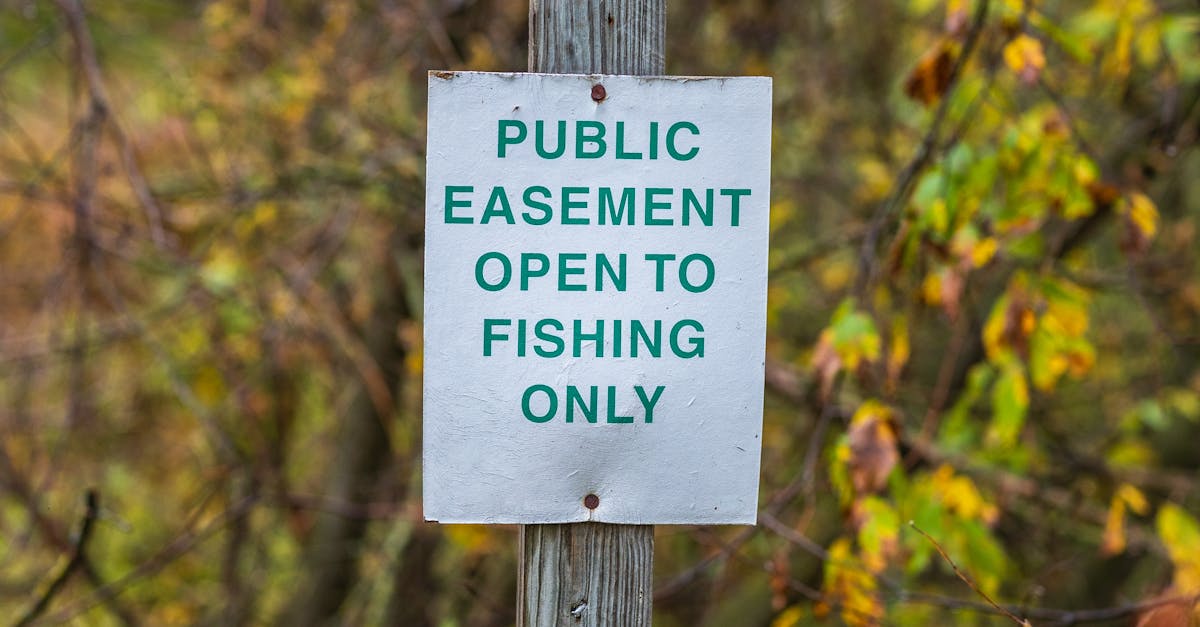
Best Practices for Creating Digital Mockups in Sign Writing
Utilising pre-made templates can greatly accelerate the design process. Templates provide a structured framework, allowing designers to focus on customisation rather than starting from scratch. This approach ensures consistency across layouts and red...
Read more →
Advanced Vinyl Techniques for Professional Sign Writers
Vinyl provides numerous opportunities to create eye-catching designs that stand out. Incorporating special effects like glitter, metallic, and reflective finishes can elevate signage, making it more dynamic and appealing. When using glitter vinyl, en...
Read more →
Customising Vinyl Designs for Unique Signage Solutions
Creating an effective vinyl design requires careful consideration before moving to production. Start by ensuring that your concept is fully developed. Consider the intended message and target audience. Visual elements should align with your brand ide...
Read more →
The Role of Temperature in Vinyl Application Success
High temperatures can significantly influence the application of vinyl. When temperatures rise, the adhesive properties of the vinyl may be enhanced, improving initial bonding. However, extreme heat can also lead to issues such as premature adhesion,...
Read more →
Preparing Surfaces for Optimal Vinyl Adhesion
Understanding the surface characteristics is essential for successful vinyl application. Different substrates can vary significantly in their texture, porosity, and finish, affecting how well the adhesive bonds. Conducting a compatibility test can he...
Read more →
Creative Techniques for Layering Vinyl in Signage
Layering vinyl can elevate the visual appeal of signage by adding depth and dimension. The technique involves meticulously applying different vinyl layers to create a cohesive design. For successful layering, it is essential to choose vinyl with vary...
Read more →
Understanding Adhesive Properties in Vinyl Signage
Adhesive thickness plays a crucial role in determining the effectiveness of vinyl signage applications. A thicker layer of adhesive can enhance the bond by providing more surface area for adhesion, which may be beneficial when the signage is exposed ...
Read more →
Troubleshooting Common Vinyl Application Issues
Proper handling of vinyl during application is crucial to achieving a professional finish. Ensure your workspace is clean and free of debris that might interfere with the adhesive. Avoid touching the adhesive side of the vinyl as oils from your finge...
Read more →
Tools and Equipment Essential for Vinyl Application
When working with vinyl application, prioritising personal safety is crucial. Essential protective gear includes safety goggles, gloves, and masks to safeguard against any potential hazards. Goggles provide eye protection from dust, debris, and adhes...
Read more →
Step-by-Step Guide to Applying Vinyl for Maximum Durability
Choosing the right adhesive is crucial for achieving durability in vinyl applications. Various types of adhesives are available, including pressure-sensitive and heat-activated options. Pressure-sensitive adhesives are often favoured for their ease o...
Read more →
Best Practices for Vinyl Application in Sign Making
Weeding is a critical step in the vinyl application process, involving the removal of excess material from the design. A sharp weeding tool such as a hook blade or tweezers can significantly enhance precision. The choice of vinyl also impacts the wee...
Read more →
Understanding Letter Spacing and Flow in Brush Lettering
Mastering letter spacing in brush lettering lays a strong foundation for achieving visually appealing compositions. Begin by familiarising yourself with the basic concepts of spacing, examining how letters interact with one another. Focus on the gaps...
Read more →
Incorporating Flourishes in Brush Lettering for Signs
When incorporating flourishes in brush lettering, one common mistake is overcomplicating the design. Beginners often feel the need to elaborate excessively, which can lead to a cluttered appearance that detracts from the main message. Keeping flouris...
Read more →
The History and Evolution of Brush Lettering in Signage
Brush lettering has seen a renaissance in recent years, with modern styles emerging that appeal to both artists and consumers. Bold strokes combined with elegant flourishes create a distinctive look that stands out in the crowded marketplace. Popular...
Read more →
Tips for Practicing Brush Lettering for Sign Writers
Establishing a consistent practice routine is crucial for anyone looking to improve their brush lettering skills. Beginners may find it beneficial to dedicate a specific time each day or week to focus solely on this practice. Block out distractions d...
Read more →
Techniques for Blending Colours in Brush Lettering
Watercolour techniques bring a fluid and organic feel to brush lettering. By utilising water-based inks or paints, artists can achieve a range of effects that vary from soft washes to vibrant hues. The key lies in controlling the water-to-colour rati...
Read more →
Brush Lettering Styles for Eye-Catching Signs
Understanding colour theory is crucial for creating effective brush lettering designs. Each hue carries its own emotional weight and significance, influencing how messages are perceived. For instance, warm tones such as reds and oranges often evoke f...
Read more →
Creating Custom Typography with Brush Lettering
Custom typography designs often begin with a clear concept that reflects the intended message or theme. Creative exploration is essential, involving sketching ideas to capture the essence of what you aim to communicate. Consider the style of brush le...
Read more →
The Importance of Consistency in Brush Lettering Design
One prevalent mistake in brush lettering is inconsistency in stroke thickness. Beginners often change pressure too abruptly, leading to uneven lines that disrupt the flow of the lettering. This inconsistency can create a jarring visual effect and det...
Read more →
Essential Tools for Effective Brush Lettering Techniques
Creating unique lettering styles begins with understanding the foundational elements of brush lettering. Each style is influenced by various factors, including stroke width, letter spacing, and the choice of brushes. Experimentation is key to discove...
Read more →
Mastering the Art of Brush Lettering in Signage
Brush lettering can be a captivating method for creating expressive signage, yet many beginners fall into certain pitfalls. One common error is applying inconsistent pressure during the strokes. This inconsistency can lead to uneven thickness, which ...
Read more →
Impact of A-Frame Signage on Foot Traffic in Urban Areas
Selecting the right location for A-frame signage can significantly enhance its visibility and effectiveness. High foot traffic areas near popular businesses, public transport hubs, and parks tend to attract more passers-by. Positioning the sign at ey...
Read more →
Innovative Artwork Techniques for A-Frame Sign Designs
The integration of digital technology has revolutionised the way signage is created and implemented. Artists and designers now have access to a plethora of software tools that enable them to craft intricate, eye-catching visuals for A-frame signs. Th...
Read more →
Maintenance Tips for Long-Lasting A-Frame Signs
Proper storage of A-frame signs helps maintain their condition and prolongs their lifespan. When not in use, it’s essential to keep signs in a dry, temperature-controlled environment. This protects them from moisture, which can cause warping or det...
Read more →
Regulations for Placing A-Frame Signs on Adelaide Streets
Proper upkeep of A-frame signs is critical to ensure their effectiveness and safety. Signs that are damaged or poorly maintained can pose risks to pedestrians and drivers alike. Regular inspections should be carried out to check for signs of wear, we...
Read more →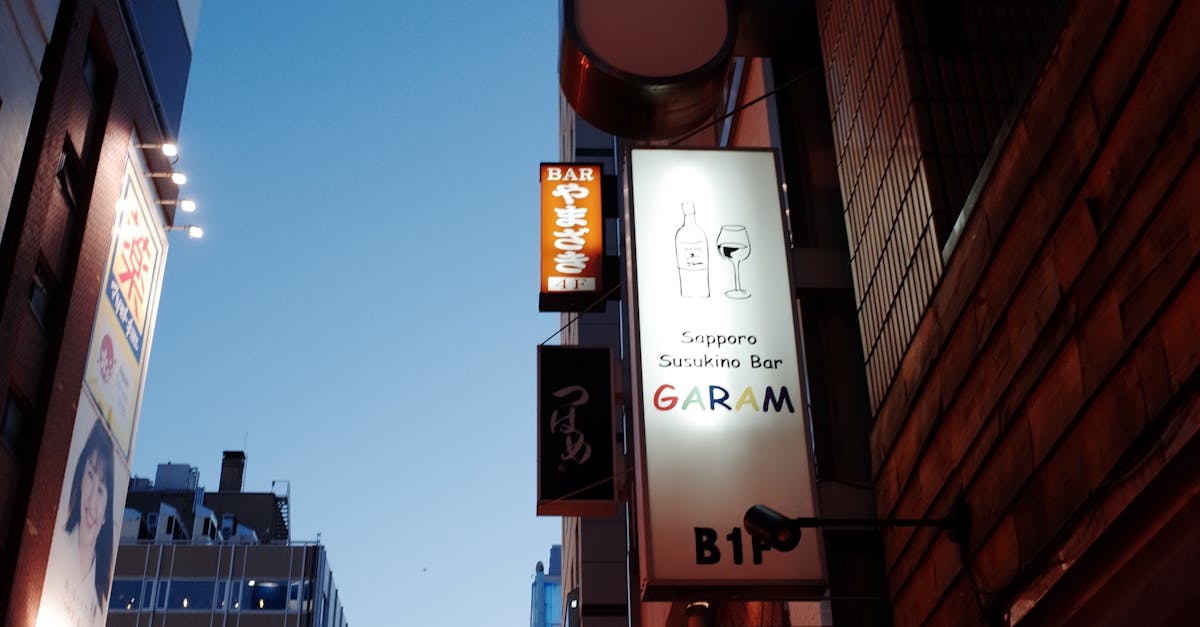
Guide to Customising A-Frame Signs for Seasonal Marketing
Local culture can significantly enhance the effectiveness of A-frame signs, making them more relatable to the community. Incorporating symbols, phrases, or imagery that resonate with the local populace fosters a sense of connection. For example, usin...
Read more →
Enhancing Visibility with Garden A-Frame Signs in Adelaide
Strategic placement of A-frame signs can significantly enhance their visibility and effectiveness. Positioning the sign at pedestrian eye level ensures that passersby can easily read the message. Placing the sign near high-traffic areas, such as the ...
Read more →
Cost-Effective Strategies for A-Frame Signage in Events
The strategic positioning of A-frame signs can significantly influence the foot traffic at an event. Placing signs near entrances or high-traffic areas maximises visibility and attracts attendees. Consider the natural flow of movement throughout the ...
Read more →
Best Materials for Durable A-Frame Signage in Varying Weather
Metal A-frame signs are renowned for their substantial durability. Constructed from materials like aluminium or steel, they withstand harsh weather conditions without compromising structural integrity. This resilience ensures that businesses can rely...
Read more →
Designing Eye-Catching A-Frame Signs for Outdoor Promotions
Branding plays a crucial role in making A-frame signs stand out in a crowded marketplace. Effective logos, colour schemes, and font choices help create a strong visual identity. Incorporating these elements consistently within the sign design reinfor...
Read more →
Creative Uses for A-Frame Signs in Adelaide's Retail Spaces
Retailers can leverage A-frame signs to capture the attention of customers and encourage social media engagement effectively. By incorporating Instagram-worthy visuals and catchy hashtags, businesses can invite shoppers to snap pictures and share the...
Read more →
Using Window Signage to Boost Brand Identity
Incorporating seasonal updates into window signage can create a dynamic connection between a brand and its customers. Frequent changes in themes and visuals can reflect current trends, seasonal holidays, or local events. This approach not only attrac...
Read more →
Regulatory Guidelines for Window Signage in South Australia
In South Australia, obtaining the necessary permits for window signage is essential for compliance with local regulations. Applicants must submit detailed plans that include design specifications, dimensions, and proposed placement. Each application ...
Read more →
Custom Window Signage for Retail Businesses in Adelaide
When it comes to installing custom window signage, businesses have a range of options to choose from. Professional installation is often preferred for larger or more intricate designs. Experts ensure that the signage is positioned accurately and secu...
Read more →
Techniques for Installing Window Graphics Safely
Achieving proper alignment is crucial for a professional finish when installing window graphics. Begin by thoroughly cleaning the glass surface to remove any dust or debris, as these can affect the adhesion and overall appearance. A good practice is ...
Read more →
Eco-Friendly Materials for Window Signage Solutions
The growing awareness of environmental issues has led to a shift towards materials that reduce reliance on traditional PVC in signage. These alternatives often utilise natural or recycled substances, which present significant environmental benefits. ...
Read more →
Enhancing Storefront Visibility with Window Signage
The location of signage plays a crucial role in attracting attention and guiding potential customers through your storefront. Placing signs at eye level ensures that passersby notice them easily, especially in areas with high foot traffic. Consider s...
Read more →
The Impact of Colour Choices in Window Signage
Colour plays a pivotal role in influencing customer behaviour, often acting as an unspoken communicator of a brand's message. Various studies indicate that colours can evoke different emotions and responses, with warm colours like red and orange gene...
Read more →
Designing Effective Promotional Window Displays
Incorporating technology into window displays can significantly enhance customer engagement. Digital screens showcase dynamic visuals that capture attention and convey complex messages efficiently. These screens can display promotional videos, highli...
Read more →
Creative Ideas for Window Signage in Adelaide
Utilising sustainable materials in window signage contributes to reducing environmental impact. Options such as reclaimed wood, recycled plastics, and biodegradable products are increasingly popular among businesses in Adelaide. Choosing these materi...
Read more →
Benefits of Frosted Glass Window Signage
Frosted glass signage offers a low-maintenance solution for businesses seeking both function and style. Unlike other materials that may require frequent cleaning or upkeep, frost finishes are less prone to showing smudges or fingerprints, making them...
Read more →
Tips for Maintaining Your Outdoor Banners in Adelaide
Effective securing of outdoor banners is essential for maintaining their appearance and functionality. Customised brackets, bungee cords, and other fixtures can provide the necessary support to withstand strong winds and unpredictable weather conditi...
Read more →
Innovative Shapes and Formats for Outdoor Banners
Incorporating interactive elements into outdoor banners enhances engagement and captures attention effectively. Many businesses are leveraging technology to create immersive experiences for their audience. From touch-sensitive surfaces that react to ...
Read more →
Sustainable Materials for Environmentally Friendly Outdoor Banners
The choice of printing techniques plays a crucial role in the environmental impact of outdoor banners. Water-based inks are popular for their reduced toxic emissions compared to solvent-based alternatives. These inks not only minimise air pollution b...
Read more →
The Role of Colours in Outdoor Banner Design
Brand identity significantly influences colour selection in outdoor banner design. Colours evoke emotions and associations that can reinforce the message of the brand. For example, blue often conveys trust and reliability, making it a popular choice ...
Read more →
Strategic Locations for Maximum Outdoor Banner Visibility
Sporting venues present a prime opportunity for outdoor banner visibility. The excitement of major events brings in large crowds, ensuring that advertisements receive significant attention. Banners positioned at strategic points can attract the gaze ...
Read more →
Cost-Effective Outdoor Banner Printing Solutions in Adelaide
When designing outdoor banners, it is essential to choose weather-resistant materials that can withstand various environmental conditions. Vinyl is a popular choice due to its ability to repel water and resist fading from UV exposure. Additionally, u...
Read more →
Outdoor Banner Promotion Techniques for Local Events
Adding QR codes to outdoor banners provides an opportunity for immediate engagement with your audience. When passersby scan these codes with their smartphones, they can access information such as event details, promotional offers, or social media pag...
Read more →
The Impact of Weather on Outdoor Banner Durability
High humidity levels can significantly shorten the lifespan of outdoor banners. When humidity increases, moisture in the air saturates the materials, leading to a range of issues such as mould growth and fabric weakening. As banners absorb this moist...
Read more →
Creative Designs for Eye-Catching Outdoor Banners
Selecting the right locations for outdoor banners is crucial for maximising visibility and impact. Ideally, high-traffic areas such as busy intersections, shopping centres, and parks should be targeted to ensure that a diverse audience encounters the...
Read more →
Effective Materials for Outdoor Banners in Adelaide
The growing awareness of environmental issues has led to an increased demand for eco-friendly materials in the production of outdoor banners. Recycled plastic materials, such as PVC-free options, are gaining popularity. These materials reduce plastic...
Read more →
Incorporating QR Codes into Vehicle Signage Designs
The versatility of QR codes has transformed marketing strategies across various industries. Businesses can use these codes on vehicle signage to connect directly with potential customers. A quick scan allows users to access promotional content, such ...
Read more →
Maintenance Tips for Long-Lasting Vehicle Signage
With changing seasons come varying weather conditions that can impact the durability of vehicle signage. During autumn, falling leaves and moisture can cause debris to cling to signs. Regularly cleaning signage removes any build-up that may obscure v...
Read more →
Enhancing Visibility with Reflective Vehicle Signage
Regular maintenance of reflective vehicle signage is essential for ensuring maximum visibility and effectiveness. The surfaces should be periodically inspected for signs of wear, including fading or peeling. Any damage should be addressed promptly to...
Read more →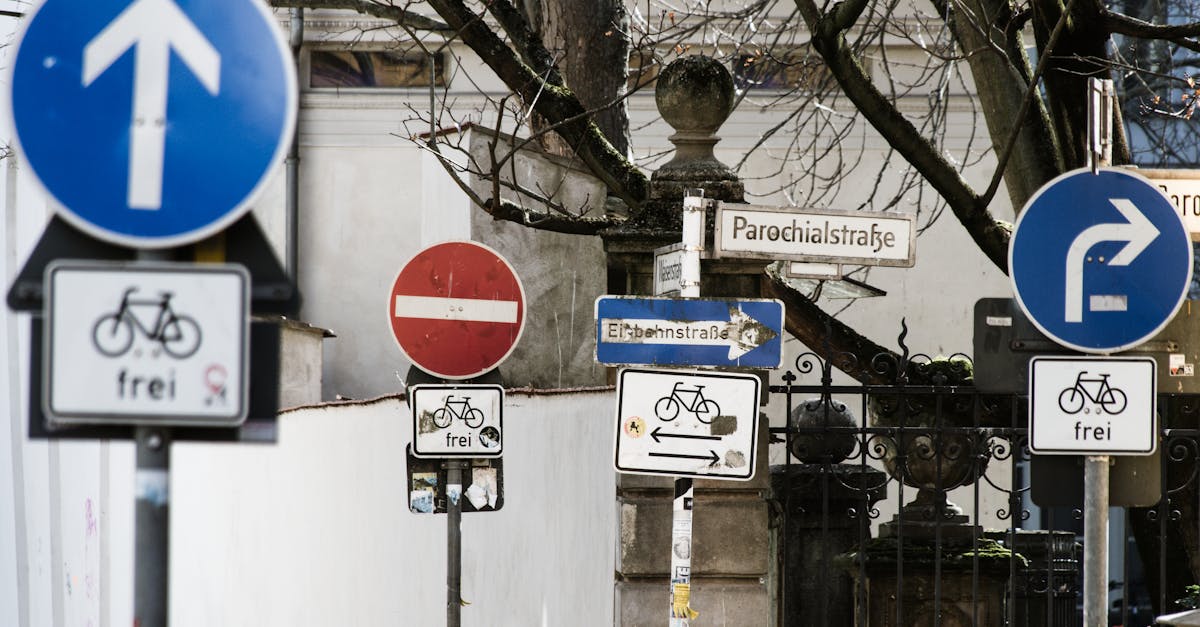
The Role of Vehicle Signage in Building Brand Awareness
Assessing the effectiveness of vehicle signage involves examining both qualitative and quantitative factors. Surveys and feedback from customers can provide insights into brand recognition linked to mobile advertising. Additionally, digital tools suc...
Read more →
Customising Vehicle Signage for Different Business Types
Service industries rely heavily on clear and engaging vehicle signage to promote their brand and services while on the go. It is essential to consider the specific nature of the services offered when designing the signage. Highlighting key offerings ...
Read more →
Compliance Considerations for Vehicle Signage in Adelaide
Understanding the permits and approvals process is crucial for businesses intending to utilise vehicle signage in Adelaide. Local councils govern signage regulations, ensuring compliance with urban aesthetics and safety. Before beginning any advertis...
Read more →
The Benefits of Mobile Advertising with Vehicle Signage
Mobile advertising through vehicle signage offers a unique opportunity to enhance brand visibility. When a vehicle adorned with eye-catching graphics travels through neighbourhoods, it captures the attention of pedestrians and other drivers alike. Th...
Read more →
Effective Design Tips for Eye-Catching Vehicle Signage
Integrating branding elements into vehicle signage plays a crucial role in creating a memorable impression. Utilising logos, colour schemes, and typography consistent with the brand identity promotes immediate recognition. This familiarity helps to e...
Read more →
The Impact of Vehicle Signage on Local Business Branding
Effective measurement of vehicle signage impact involves a blend of quantitative and qualitative assessments. Key performance indicators (KPIs) such as increased foot traffic, website visits, and sales revenue serve as tangible metrics for businesses...
Read more →
Choosing the Right Materials for Vehicle Signage in Adelaide
When creating vehicle signage in Adelaide, it is essential to adhere to the local regulations that govern size, placement, and content. These laws help to ensure safety, visibility, and clarity. Businesses must consider restrictions related to specif...
Read more →
Understanding Illumination Levels for Effective Signage
Illumination levels play a crucial role in the effectiveness of signage. Precise measurements ensure that signs are not only visible but also aesthetically pleasing. In commercial settings, the brightness of a sign can influence customer attention an...
Read more →
Benefits of 3D Illuminated Signage for High-traffic Locations
The energy consumption of traditional signage can be significant, often resulting in high electricity bills. In contrast, 3D illuminated signage utilises advanced LED technology, which is not only brighter but also consumes considerably less power. T...
Read more →
Case Studies of Successful Illuminated Signage in Adelaide
The initial investment in illuminated signage can vary significantly based on several factors. Material quality, size, and technology type all contribute to the overall expense. High-quality LED options often entail higher upfront costs, yet they off...
Read more →
Innovative LED Solutions for Contemporary Illuminated Signs
The integration of smart technology into illuminated signs represents a significant advancement in their functionality and user engagement. By incorporating features such as motion sensors and ambient light detection, these signs can adapt their brig...
Read more →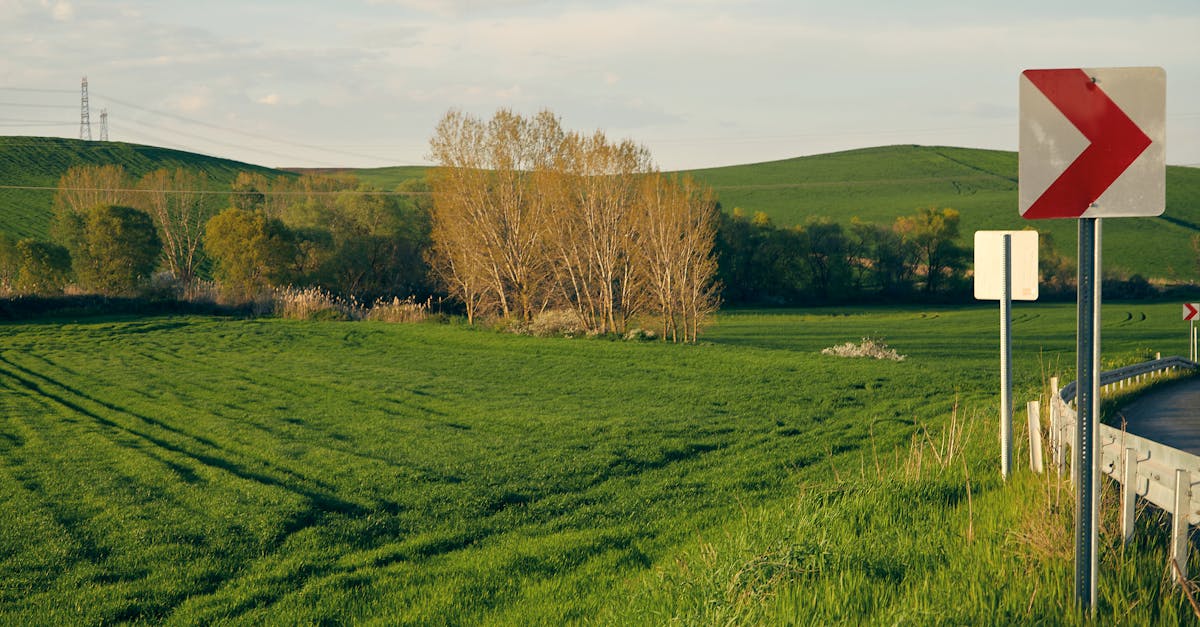
Maintenance Best Practices for Long-lasting Illuminated Signage
Illuminated signage faces numerous challenges due to environmental conditions. Exposure to rain, wind, snow, and heat can significantly impact the longevity and visibility of these signs. Regular inspections are crucial to identify potential issues l...
Read more →
The Role of Colour Psychology in Illuminated Signage Design
Understanding colour combinations is essential for effective illuminated signage design. Different colours evoke specific emotions and associations, influencing how messages are perceived. For instance, warm colours like red and orange can stimulate ...
Read more →
Legal Considerations for Illuminated Signage in Urban Areas
Urban settings must address the challenge of light pollution when introducing illuminated signage. Excessive and poorly directed light can have detrimental effects on local wildlife and human health. Regulations often necessitate the use of signage t...
Read more →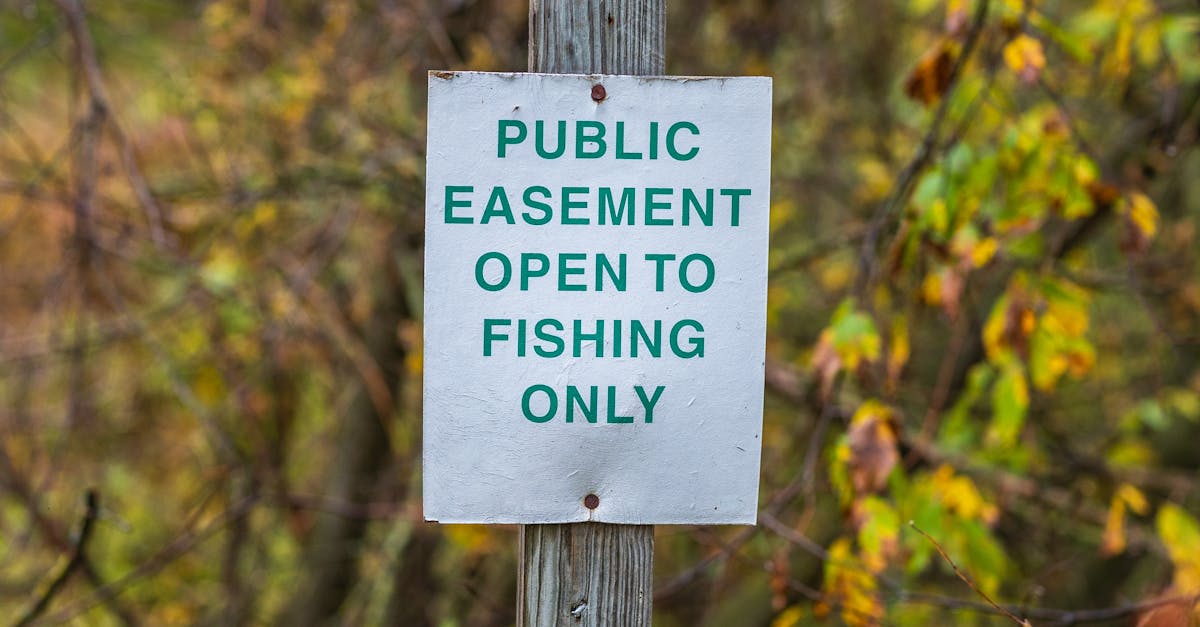
The Impact of Illuminated Signage on Business Visibility in Adelaide
Creating effective illuminated signage requires careful consideration of both design elements and practical functionality. Simplicity often leads to greater recognition. A clear and concise message ensures that passers-by can easily understand it at ...
Read more →
Energy Efficiency Tips for Illuminated Signage in Adelaide
Harnessing solar power for illuminated signage represents a sustainable approach to energy consumption. Solar panels can be installed at the site of the signage, converting sunlight into electricity. This setup not only reduces dependency on traditio...
Read more →
Choosing the Right Type of Illuminated Signage for Your Brand
In today’s environmentally conscious landscape, businesses are increasingly prioritising energy-efficient solutions for their signage needs. LED lights stand out as an excellent choice due to their low energy consumption and impressive lifespan. Un...
Read more →